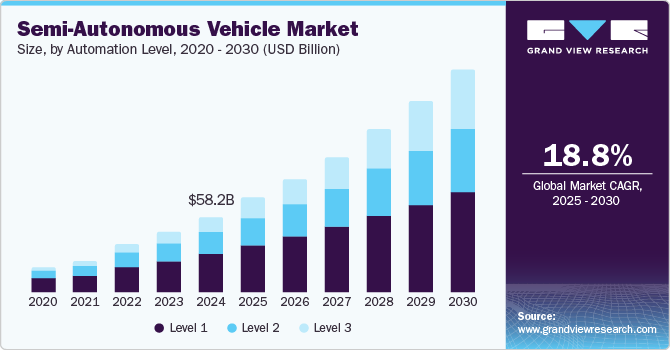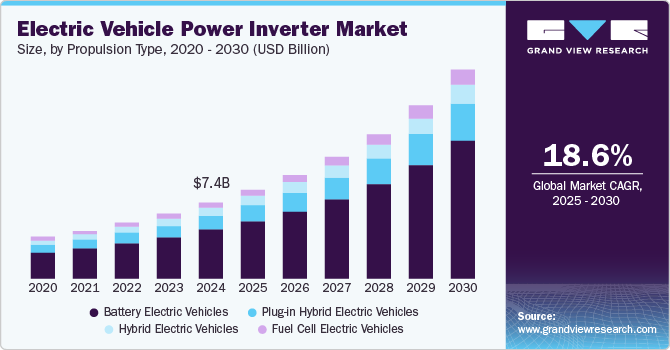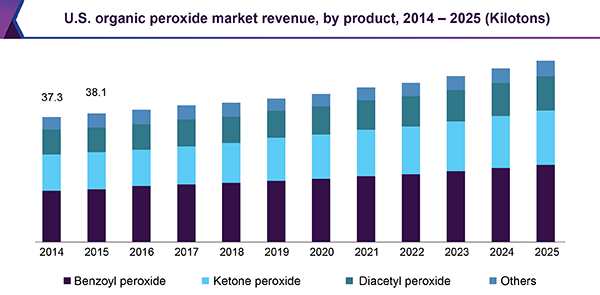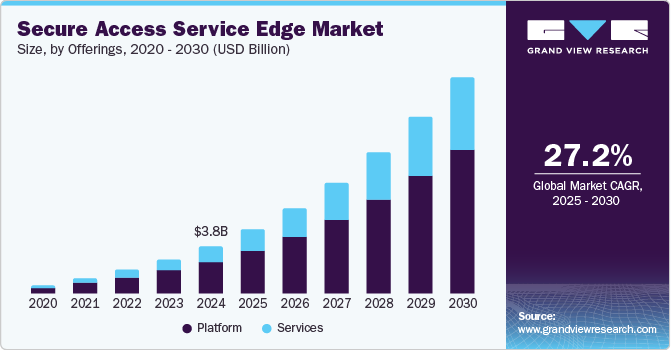Semi-Autonomous Vehicle Market Size, Share & Trends Analysis growing at a CAGR of 18.8% from 2025 to 2030

The global semi-autonomous vehicle market size was valued at USD 58.17 billion in 2024 and is projected to grow at a CAGR of 18.8% from 2025 to 2030. The rising need for safer and more efficient driving systems promotes the development and adoption of semi-autonomous vehicles. Semi-autonomous offers better driving control and driver safety, thus offering promising growth opportunities. Moreover, several regional governments have implemented stringent driving and safety laws, further encouraging companies to offer these technologies in their automobiles.
Request a free sample copy or view report summary: https://www.grandviewresearch.com/industry-analysis/semi-autonomous-vehicle-market/request/rs1
Ongoing advancements in AI, sensors, and connectivity enhance the reliability and capabilities of semi-autonomous systems, encouraging consumer interest in these vehicles. For instance, the use of machine learning (ML) algorithms has further enhanced the functionality and efficiency of automobiles. This technology has several applications, such as object detection and classification, driver monitoring, and deep-learning-based vision to react to the vehicle’s environment in real time. Moreover, machine learning algorithms analyze real-time traffic data and conditions to determine the most efficient route. Using reinforcement learning models can train vehicles to make driving decisions by simulating various driving scenarios, such as when to merge, stop, or overtake other vehicles. ML models can predict the actions of other road users, such as pedestrians and cyclists, based on historical data and patterns, allowing the vehicle to anticipate potential hazards. Autonomous vehicles collect substantial amounts of data during their operations, which can be used to refine and improve machine learning models continuously. This process helps enhance performance in a range of driving conditions.
Semi-autonomous driving has witnessed high demand in developed economies such as the U.S., Germany, France, Japan, and Australia, while its popularity is steadily growing in developing economies. According to a report by Goldman Sachs, around 10% of new car sales globally by 2030 are expected to be Level 3 vehicles, highlighting a shifting customer perspective regarding the advantages of these technologies over manual driving and their role in minimizing the risk of accidents. Continued developments in promising concepts such as automated valet parking (AVP) are expected to help drivers efficiently park their cars without requiring any manual inputs while also preventing the occurrence of accidents in parking lots, aiding stronger demand for autonomous cars. Bosch, in partnership with Mercedes-Benz, has developed the Intelligent Park Pilot that received approval from Germany’s Federal Motor Transport Authority (KBA) in November 2022 to be used at the Stuttgart Airport. This made it the first highly automated parking system globally to be approved for commercial usage, indicating positive growth prospects for the autonomous and semi-autonomous vehicle ecosystems in the coming years.
Automation Level Insights
Level 1 automation accounted for the largest revenue share of 50.6% in the global semi-autonomous vehicle market in 2024. This substantial contribution can be attributed to increasing awareness regarding autonomous driving technologies among consumers globally and the subsequent demand to incorporate these systems in their vehicles. Level 1 automation provides an optimum level of easy maneuverability and manual control through the presence of technologies such as adaptive cruise control and enhanced lane assistance. As these vehicles offer a basic level of assistance while also requiring manual control while driving, they have proved to be popular among consumers who want to select autonomous features in their vehicles. Manufacturers such as BMW, Mercedes, and General Motors have introduced a range of models integrated with Level 1 automation systems, ensuring competitive advantage. Emerging economies are expected to hold significant promises for this segment, as these nations have recently started implementing regulations that would allow the use of Level 1 DAS in vehicles.






